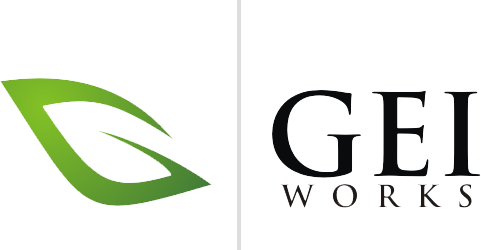Hydraulic dredging removes sediment and debris from water bodies to maintain navigable waterways, nourish beaches, or perform environmental remediation.
Dredging is not without its challenges, however. The amount of suspended silt or turbidity this process generates can be considerable and can have a detrimental impact on the environment. Suspended particles in the surrounding water can seriously diminish water clarity, disturb ecosystems, and release toxins. The disruption dredging can cause has led to the use of turbidity curtains as a best management practice to contain suspended sediment and comply with environmental policy.
How a Turbidity Curtain Works
Turbidity curtains often stretch out in waterways at the perimeter of a jobsite or work area to enclose particles of silt and sediment suspended in the water column. A silt curtain consists of a surface flotation, a skirt, and a ballast component. Challenging conditions call for the use of reinforced tension cables and connectors.
The silt curtain skirt hangs vertically from surface floats and terminates about a foot from the bottom. Land or water anchors suitable for the conditions maintain the curtain’s position. Once in place, suspended particles strike the curtain skirt and are deflected downward where they can settle safely beyond the curtain perimeter.
Various turbidity curtains are available, depending on the application. Pond dredging in calm water applications may require only a light gauge contractor-grade curtain with no additional reinforcement. In river dredging or open water conditions, a heavy-duty curtain with up to three reinforcement cables is often required. When used in conjunction with adequate anchoring, the cables allow the hydrodynamic force to transfer away from the curtain to the anchors, decreasing the stress on the containment system.
Curtain Setup at a Dredging Site
The purpose of the turbidity curtain is to surround the point of origin and confine the turbidity as much as possible. Effective silt control in any turbidity curtain application relies on many factors. Selecting the best model of curtain depends on site conditions: wave action, wind, current and other environmental factors.
It’s important to collect site data to ensure not only correct selection of a curtain, but also its optimum deployment. Check the depth of the water with a bathymetric survey to calculate the correct height for the skirt. A tide gauge can calculate the fluctuation in depth. Also, the direction of water current, wave turbulence and area boat traffic are all important factors to consider in positioning and deployment.
Locate appropriate spots for the anchoring. Inadequate anchoring is a chief cause of turbidity curtain failure, so consider the number and size of the anchors.
Positioning and Maintaining the Curtain
Position the curtain so it extends one foot from the bottom. Proper assembly geometry varies based on where the dredging is taking place. If near the shore, a semicircle is recommended with the ends anchored on land. Be sure to factor in tides and currents.
In open water, there are a few options. If the current is flowing in one direction and doesn’t change with the tide, it may be acceptable to use a simple U-shape. If the current is prone to reversal, however, you’ll want to opt for an elliptical or circular pattern. The latter option lends itself to stronger anchoring, which is critical in keeping the curtain functioning at maximum effectiveness.
GEI Type 3 HD Curtains are designed for use in fast water with waves and other challenging conditions, making them a frequent choice for dredging operations. These robust curtains also have enhanced cabling across the top for greater stability.
After deployment, be sure to inspect the curtain daily for any damage or failures. Check the flotation, anchoring and connectors to help ensure continued performance. Keep it clean of marine life or other natural contaminants.
Selection, preparation, deployment according to specs, and daily maintenance — these will go a long way toward peak turbidity control at a dredging site. A little extra care will help you avert problems along the way and complete a successful, trouble-free operation.
Contact Our Team at GEI Works to discuss your project and develop a solution.
geiworks.com | (772) 646–0597 | info@geiworks.com




